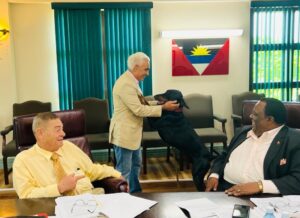The landmark case highlights advancements in forensic technology that can resolve decades-old crimes.
**92-Year-Old Receives Life Sentence for 1967 Murder and Rape in Cold Case Resolution**

**92-Year-Old Receives Life Sentence for 1967 Murder and Rape in Cold Case Resolution**
DNA evidence leads to the conviction of Ryland Headley, bringing closure to the family of victim Louisa Dunne.
In a groundbreaking development in British criminal justice, a 92-year-old man named Ryland Headley was sentenced to life in prison for the 1967 rape and murder of 75-year-old Louisa Dunne. This case, one of the oldest cold cases in Britain, was reopened by Avon and Somerset Police in 2023, leading to a resolution that has provided long-awaited justice.
A jury found Headley guilty after DNA evidence linked him to the crime scene, where Dunne was tragically discovered in her home just outside Bristol. In May of 2024, police conducted forensic analyses on several items, including the blue skirt Dunne wore during the attack. Semen found on the garment matched Headley’s DNA, which had been logged in the police database since 2012 due to an unrelated incident. Additionally, a palm print discovered on Dunne's bedroom window further strengthened the case against him.
Following a police arrest on November 19, Headley remained in custody, maintaining his innocence with a series of "no comment" responses during questioning. The investigation into Dunne's murder, which initially involved fingerprinting over 19,000 men, did not include Headley at the time as he lived outside the area.
Historically, Headley had already been convicted of raping two elderly women in Ipswich in 1977, an offense that had led to a life sentence, later mitigated. Louisa Dunne's granddaughter, Mary Dainton, expressed the family’s disbelief upon learning Headley had been apprehended after all these years, revealing that they had lost hope of ever seeing justice served. She recounted the profound impact of her grandmother’s murder on her family, particularly on her mother, who struggled with the emotional aftermath.
This case not only encapsulates the relentless pursuit of justice but also highlights how advancements in forensic science can bring solace to victims’ families, even decades later—a testament to the enduring weight of unresolved tragedies in our society.
A jury found Headley guilty after DNA evidence linked him to the crime scene, where Dunne was tragically discovered in her home just outside Bristol. In May of 2024, police conducted forensic analyses on several items, including the blue skirt Dunne wore during the attack. Semen found on the garment matched Headley’s DNA, which had been logged in the police database since 2012 due to an unrelated incident. Additionally, a palm print discovered on Dunne's bedroom window further strengthened the case against him.
Following a police arrest on November 19, Headley remained in custody, maintaining his innocence with a series of "no comment" responses during questioning. The investigation into Dunne's murder, which initially involved fingerprinting over 19,000 men, did not include Headley at the time as he lived outside the area.
Historically, Headley had already been convicted of raping two elderly women in Ipswich in 1977, an offense that had led to a life sentence, later mitigated. Louisa Dunne's granddaughter, Mary Dainton, expressed the family’s disbelief upon learning Headley had been apprehended after all these years, revealing that they had lost hope of ever seeing justice served. She recounted the profound impact of her grandmother’s murder on her family, particularly on her mother, who struggled with the emotional aftermath.
This case not only encapsulates the relentless pursuit of justice but also highlights how advancements in forensic science can bring solace to victims’ families, even decades later—a testament to the enduring weight of unresolved tragedies in our society.


















